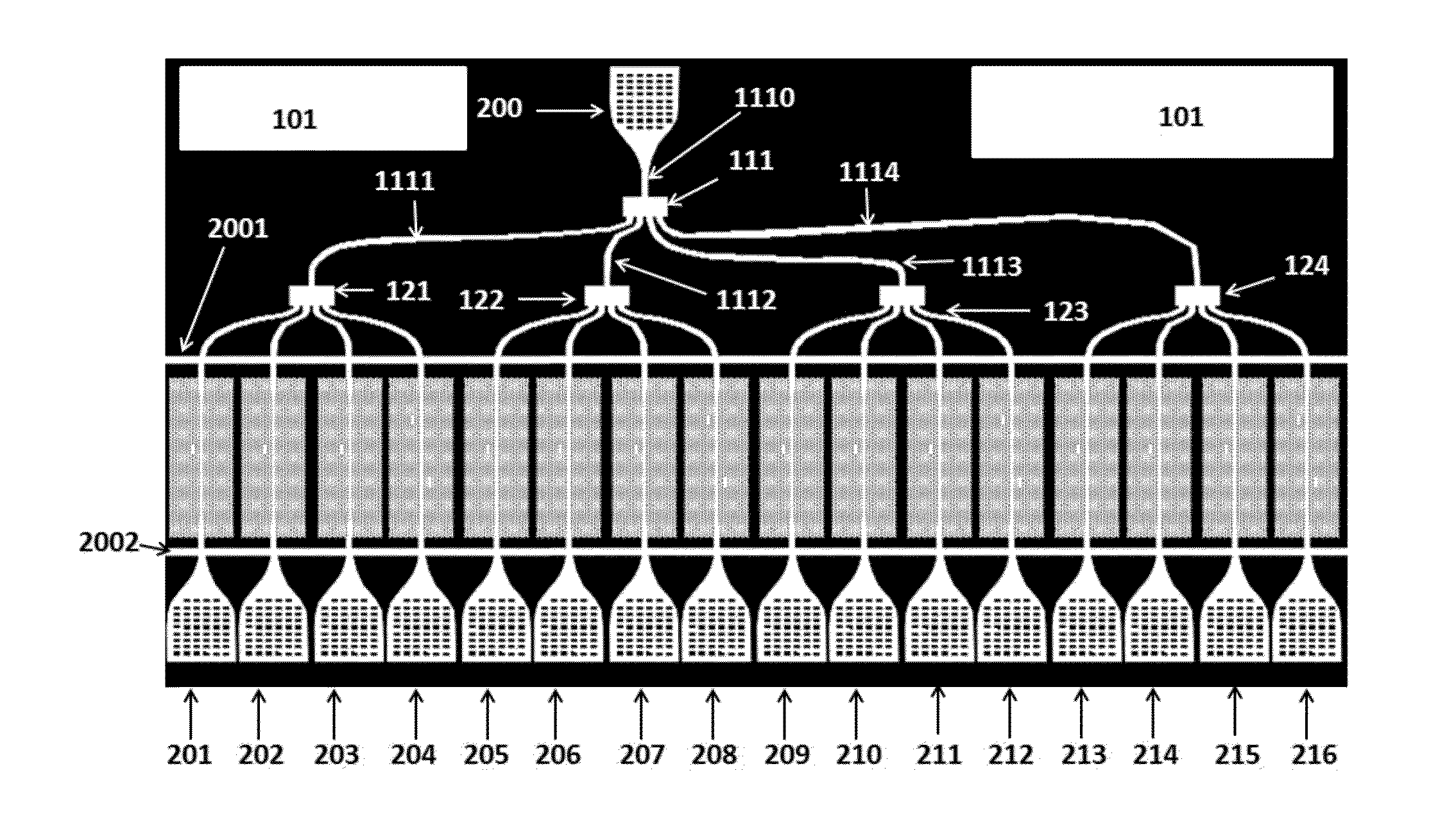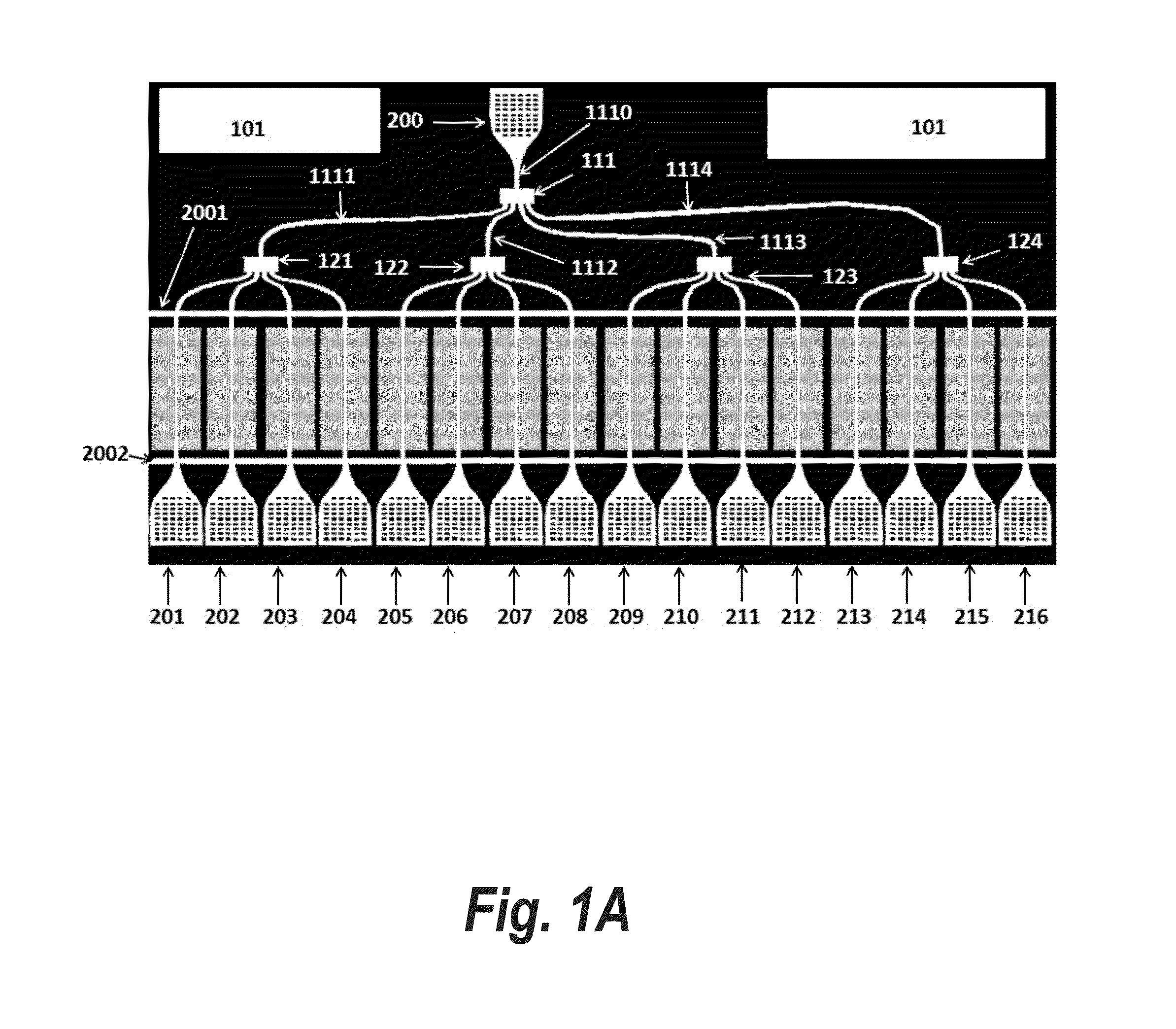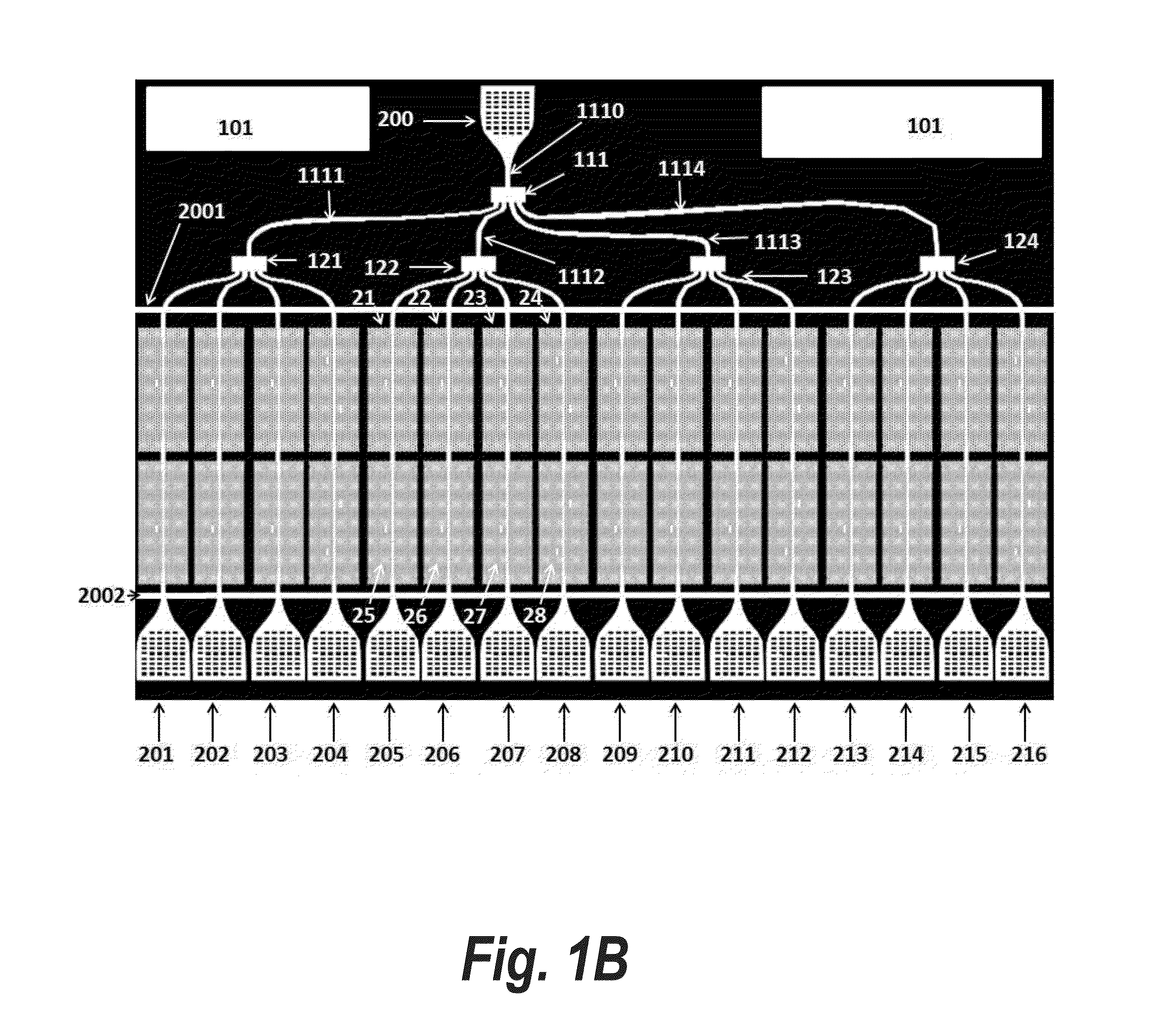Packaged Chip For Multiplexing Photonic Crystal Microcavity Coupled Waveguide And Photonic Crystal Slot Waveguide Devices For Chip-Integrated Label-Free Detection And Absorption Spectroscopy With High Throughput, Sensitivity, Specificity, And Wide Dynamic Range
a technology of photonic crystal microcavity and integrated optical devices, which is applied in the direction of optical waveguide light guides, optical elements, instruments, etc., can solve the problems of small wavelength range over which light is slowed down as it propagates down the photonic crystal waveguide, and achieves a small minimize reflection, and reduce the effect of effective refractive index or dielectric constan
- Summary
- Abstract
- Description
- Claims
- Application Information
AI Technical Summary
Benefits of technology
Problems solved by technology
Method used
Image
Examples
second embodiment
[0112]FIG. 18A is the top view of the packaged optical chip showing the layout of the chip in FIG. 1A in the package 600. Square grooves 601, 602, 603, and 604 are made at the four corners of the package. The package 600 may be ceramic, plastic, or any material which provides toughness and environmental protection to the internal semiconductor chip. The opening in the package 701 on the top side is aligned with the microfluidic channel opening 700 in the semiconductor chip. Openings are made in the package 600 as bordered by the segments 1071 and 1072. The element 109 is also voided in the region bordered by 1071 and 1072 so that the element 108 is exposed. In essence, light is then coupled into the semiconductor chip from the top of the chip from external optical sources and through the top cover polymer cover 108. Similarly, light is coupled out of the semiconductor chip from the top of the chip to external optical detectors and through the top cover polymer cover 108.
[0113]FIG. 1...
third embodiment
[0116]FIG. 20 is the top view of the packaged optical chip showing the layout of the chip in FIG. 1A in the package 600. Square grooves 601, 602, 603, and 604 are made at the four corners of the package. The package 600 may be ceramic, plastic, or any material which provides toughness and environmental protection to the internal semiconductor chip. The opening in the package 701 on the top side is aligned with the microfluidic channel opening 700 in the semiconductor chip. Openings are made in the package 600 as bordered by the segments 1071 and 1072. The elements 108 and 109 are also voided in the region bordered by 1071 and 1072 so that the input sub-wavelength grating coupler 200 and the output sub-wavelength grating couplers 201, 202, 203 . . . 216 are exposed. In essence, light is then coupled into the semiconductor chip from the top of the chip from external optical sources and directly into the input sub-wavelength grating coupler 200. Similarly, light is coupled out of the s...
PUM
 Login to View More
Login to View More Abstract
Description
Claims
Application Information
 Login to View More
Login to View More - R&D
- Intellectual Property
- Life Sciences
- Materials
- Tech Scout
- Unparalleled Data Quality
- Higher Quality Content
- 60% Fewer Hallucinations
Browse by: Latest US Patents, China's latest patents, Technical Efficacy Thesaurus, Application Domain, Technology Topic, Popular Technical Reports.
© 2025 PatSnap. All rights reserved.Legal|Privacy policy|Modern Slavery Act Transparency Statement|Sitemap|About US| Contact US: help@patsnap.com



